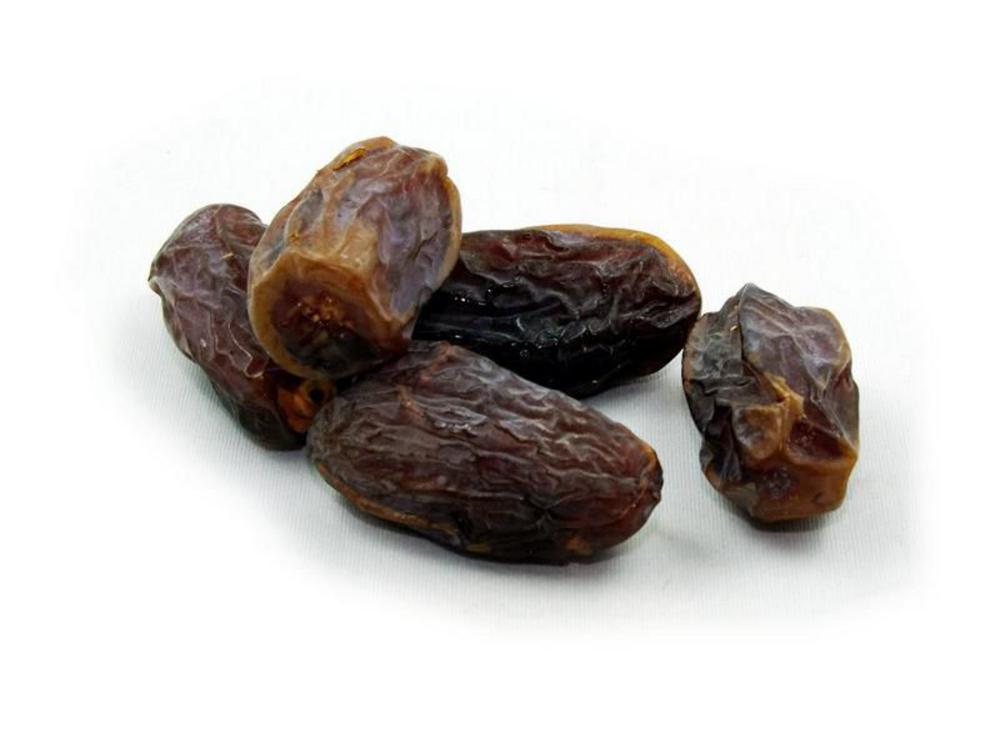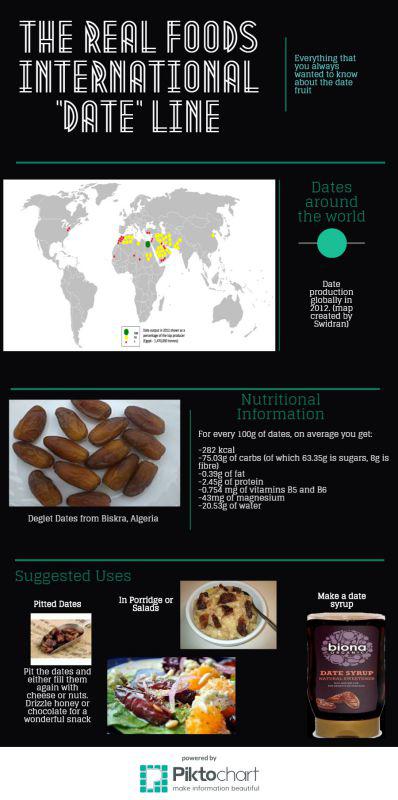
Buy fresh and dried dates here
Buy Date Syrup here
Where are dates from?
For centuries dates have been a staple foodstuff in numerous countries in and near the Indus Valley, the Mediterranean, Mesopotamia, and Northern Africa. In fact, there may be some evidence of date cultivation in Mehrgarh, Pakistan as far back as 7000 BCE. The date is such an important component of Asian and African diets that the list of cultivars (a variety of plant that originated and persisted under cultivation) is enormous. However, there are three primary cultivars: soft, semi-dry, and dry. Representatives of each cultivar are, respectively: Medjool/Mejhool (sweet), Deglet Noor (semi-dry), and Thoory/Thuri (dry).
What do dates look like:
The outer appearance of the date fruit can vary drastically from one cultivar or region to another. However, there are some general phenotypes that could be considered to be representative of the entire family; namely: that they are usually oval-cylindrical, approximately 3-7cm long, with a single stone or pit inside that can range from 2-2.5cm long. The skin of the date can range in colour from brilliant red, light golden-brown, red-brown, to amber or light golden.
What do dates do:
Dates are a good source of dietary fibre, healthy sugars, and some essential nutrients such as zinc or selenium. In some areas the syrup of the date fruit is used as a coating to prevent leakage in leather bags or pipes. In their dried form, dates can also be ground up to made a nutritious stockfeed. In some cases the seeds can even be burned to make a type of charcoal, or ground to make a form of coffee.
100g of dates provides approximately 282kcal, 2.45g of protein, 63.35g of sugars, but only 0.39g of fat.
What can I do with a date:
The inside of the date is where the magic really lies. One can easily eat dates straight from out of the package, chop them up for use in a fruit & nut mix, after removing the pits you can stuff the dates with almonds, cheese, or really anything that you can imagine; or even add them to dough for date bread. In some Mesopotamian areas, dates are even used to make a non-alcoholic version of champagne, or even vinegar. Plus, they are delicious when made into a syrup and drizzled over ice cream or pancakes!
